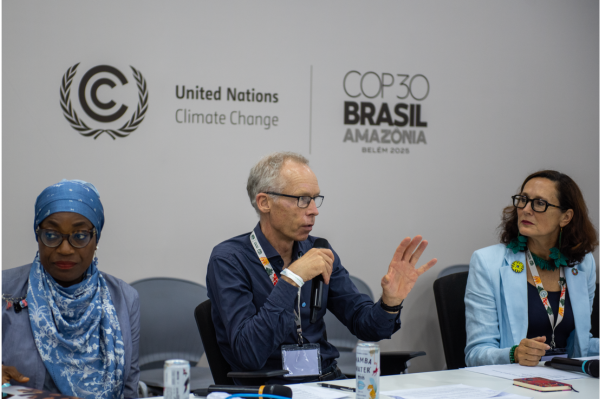When other fashion businesses complain about Shein, it is usually about the saturation its ultra-fast fashion model causes in the clothing market, and because it draws the attention of legislators and sustainability-minded consumers to practices that are otherwise hidden to those outside the industry.
That’s because Shein is just the most obvious manifestation of a prevailing ethos that cares little about sustainability, labour conditions for workers, or quality, and is focused on optimising profits, as we at the Hot or Cool Institute found in the report “Unfit, Unfair, Unfashionable: Resizing Fashion for a Fair Consumption Space.”
Even conservative estimates place fashion among the top global polluters, with a share of global climate-warming gases varying from the Global Fashion Agenda’s 4.8% up to an estimated 10% by the United Nations Environment Programme. Changing how garments are produced and consumed is essential to achieving international climate goals. Our analysis shows that emissions from fashion would need to fall by 50-60% within the next seven years to stay below 1.5-degree increased warming.
Far from taking a pause to course-correct, the fashion industry remains on a trajectory to double its emissions within 10 years, to around 2.7 billion tonnes of CO2-equivalent in 2030. Trends show escalated production volumes and increasedfashion cycles per year, more complex and difficult to-recycle artificial fabrics, more discounted sales, shorter use-time per clothing item, and a trend to destroy unsold items or ship off second-hand clothes to landfills in the Global South.
Policymakers, including in the European Union and the United States, have taken note, and are preparing legislation to extend the responsibility of fashion brands to cover impacts across the life cycles and supply chains of their products. It’s an approach known as extended producer responsibility, or EPR.
But lessons from the application of EPR in other sectors, such as electronic waste management and packaging, show that poorly defined policies can merely shift the burden from rich nations to low-income countries. Brand owners have also found ways to transfer the onus onto consumers, greenwashing while increasing profits for shareholders.
Designed the right way, EPR could achieve four critical objectives that would bring fashion within ecological limits and address attendant social tensions. First, improve clothing recycling and waste management. Second, ensure fashion brands pay for the costs of environmental damage and waste management resulting from operations across their supply chains. And third, change the design of clothing and business strategy to ensure that operations and products are less harmful and can be easily assimilated by nature or recycled after use.
The fourth is no less important: ensure fair and just practices across the industry, especially to partners in low-income countries, where citizens endure the double whammy of poor manufacturing conditions and the negative impacts of environmental pollution.
The fashion industry tends to focus mainly on the first objective of waste management and has practically reduced it to recycling. The appeal of this is that instead of changing core strategy, business-as-usual can continue with only marginal tweaks, bringing in technology to manage post-consumer waste and unsold clothes.
An effective EPR policy would be designed to ensure the other three objectives are also met. In the G20 countries, 84% of greenhouse gas emissions embodied in fashion consumption occur in upstream production, from fibre cultivation to garment tailoring and finishing. Although textile waste represents one of the largest components of municipal waste, industry leaders have baulked at suggestions to reduce clothing overproduction or make process changes that affect item design. In its June 2023 resolution on an EU Strategy for Sustainable and Circular Textiles, the European Parliament was emphatic in its language, calling for “a paradigm shift in the fashion industry to end overproduction and unsustainable consumption, driving fast fashion to go out of fashion”.
But to achieve this the EU would need to set clear targets to cut down overproduction and emissions, restrict the use of artificial fibres, ban practices such as destroying unsold items, and phase out the production of items with high per capita footprints.
In terms of social justice and inequality, the unfair working conditions in manufacturing countries have seen some public attention, with the European Parliament acknowledging that “power asymmetries between suppliers and global buyers, as well as harmful purchasing practices, exacerbate the risk of labour rights abuses”.
What has hardly been discussed, however, is the sheer inequality of fashion consumption across income groups. Our report shows that on average, fashion consumption by the richest 20% in any given population causes 20 times higher emissions than by the poorest 20%. This ratio varies with income inequality.
An equity-based approach to meet the 1.5-degree limit of the Paris Agreement implies that the richest 20% need to reduce their footprint from fashion consumption by, for example, 83% in the UK, 75% in Italy and Germany, and 50% in France. Measures would be needed to regulate advertising and perceived or planned obsolescence that drives overconsumption, industry antics such as proliferating fashion release cycles, and marketing that incentivises impulsive purchases and next-day returns.
One aspect of consumer scapegoating has been the promotion of second-hand donations instead of extending use times of garments. While this might be morally uplifting to donors, its overall impact is harmful. On average, about 10% of emissions occurring in the disposal phase of garments are linked to second-hand donations and exports. Around 30% of used clothes exported are directly incinerated or landfilled at the destination, with little accountability.
Part of the challenge of applying EPR in donation-receiving is that it is not always easy to determine brand owners or, if identified, to hold them accountable if they are foreign companies. The large informal economies in these countries also make monitoring of used clothing quality a major challenge. So, not only are receiving countries such as Ghana and Peru serving as dumping grounds for unwanted clothing to create room for new purchases by the rich, second-hand donations at a wide scale are also decimating local fashion industries in receiving countries while creating dependences on shipments from richer countries.
To address this, EPR legislation should ensure greater transparency in supply chains, and that brands maintain similar environmental, manufacturing and waste management standards in high-income and low-income countries.
Legislation should also severely restrict second hand clothing donation and exports, and protect local markets and artisans. Major brands should be made to reinvest designated percentages of their profits in manufacturing countries: towards, for example, increasing wages, improving working conditions, more environmentally sustainable products, and skills training, particularly for women.
Rather than single out Shein, industry leaders need to take responsibility and recognise the urgency and the outsized contribution of fashion to environmental damage and social issues. If it had responded appropriately to mounting evidence, there would have been no room for a Shein model and little of the attention now coming from regulators.
Were the fashion industry to devote its creative energies to resizing to live within ecological limits, rather than blowing through them, it could yet emerge as a sector that champions a just and sustainable future.



